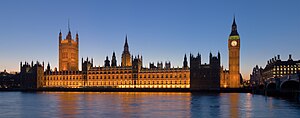I realise I'm properly due a 'part two' on the youth vote. But I got stuck in regionalism, I guess... nah, I'll get back to it, hopefully in a day or two. I was just intrigued by something that I've been noticing in EKOS polls for weeks now, something that's being called to attention this week: the existence of a true and proper four-way race in BC. The current EKOS shows the following for BC voters' intentions:
- Conservatives: 33.6% (1.9% above the national vote)
- NDP: 26.9% (9.5% above the national vote)
- Liberals: 19.8% (6.4% below the national vote)
- Green: 16.8% (5.3% above the national vote)
- Others: 2.9% (10.3% below the national vote)
A few things to consider: the BC 'other' vote is actually identical to the national 'other' vote: when I say there's a difference of 10.3%, that actually reflects BQ support, averaged across the whole nation. Accepting that the existence of a non-national party in Québec makes it more difficult to compare nationwide and provincial votes, we can still see that the NDP and Green poll much better in BC than in the rest of the nation, and the Liberals poll significantly lower. BC is actually the only part of the country where, above the margin of error, the Liberals are polling less than second-best. Intriguingly, the Vancouver numbers are practically identical to the province as a whole: I say 'intriguingly', because historically this has not always been true.
A heightened level of support for the NDP and a lowered level of support for the Liberals suggests a bipartisan system of 'left party' vs. 'right party', with the centrist party as a minor 'third party': a political playing ground that exists in a lot of places, but has tended not to exist in Canada. Looking back over BC's voting trends in recent federal elections, we can see this:
- 2008: CPC 44.4%, NDP 25.0%, LPC 19.3%, Green 9.4%
- 2006: CPC 37.3%, NDP 28.6%, LPC 27.6%, Green 5.3%
- 2004: CPC 36.3%, LPC 28.6%, NDP 26.6%, Green 6.3%
- 2000: CA 49.4%, LPC 27.7%, NDP 11.3%, PC 7.3%, Green 2.1%
- 1997: Ref 43.1%, LPC 28.8%, NDP 18.2%, PC 6.2%, Green 2.0%
- 1993: Ref 36.4%, LPC 28.1%, NDP 15.5%, PC 13.5%
- 1988: NDP 37.0%, PC 35.3%, LPC 20.4%, Ref 4.8%
- 1984: PC 46.6%, NDP 35.1%, LPC 16.4%
- 1980: PC 41.5%, NDP 35.3%, LPC 22.2%
- 1979: PC 44.3%, NDP 31.9%, LPC 23.0%
- 1974: PC 41.9%, LPC 33.8%, NDP 23.0%
- 1972: NDP 35.0%, PC 33.0%, LPC 28.9%
- 1968: LPC: 41.8% NDP 32.6, PC 18.9%
An interesting picture, not nearly as clear as I'd thought it would be. Though we need to go all the way back to 1968 (42 years) to find the Liberals winning the province, whereas the Liberals have been in power nationwide for most of that time, they've spent longer as #2 than I'd figured. In fact, for the entire Reform/CA era, between the PC's collapse and the 'consolidation of the Right', the Liberals consistently came in #2 in BC. In other words, the splitting of the right-wing vote somehow consistently pushed the centrist Liberals above the left-wing NDP: which makes little sense on the surface.
Before that era and since it, I think we can truly see the makings of a bipartisan system in BC: in 1984, for example, the PC party and the NDP party between them took over 80% of the vote in BC. While there's certainly an element there of Western dislike of Trudeau and his energy policy, NDP support is more difficult to gauge, as they are equally interested in federal intervention in energy policy.
And dislike of Trudeau, and his party as a whole, does little to explain the extent to which, provincially, BC is even more polarised. Remarkably, you have to go back to 1937 to find an election where the NDP (or the CCF before them) polled lower than #2 in total number of votes: in fact, it was the success of the CCF that in 1945 caused the Liberal and Conservative parties to enter into a coalition in order to beat them: a bloc of anti-leftist support that arguably invented the left-right dynamic we see here. The coalition collapsed, and both parties were swept practically off the map by a new right-wing party called the Social Credit Party. By 1975, the SC and the NDP were capturing almost 90% of the total vote, making the Liberals and the PCs 'fringe' parties: at a time when their federal namesakes were the two
main parties, nationwide.
What confuses the picture is the fact that, in BC, the Social Credit Party was ultimately replaced on the right by the BC Liberals. For most of the rest of the country, this makes little sense, but names do not tell the whole story: the BC Liberals are usually considered the main right-wing party in BC, and BC Liberal voters are by no means Liberal Party of Canada voters - in fact, there's a good chance they'll support the Conservative Party of Canada.
So if that's the case, how do things stand at the moment? Well, here's a recent provincial poll:
- NDP: 44%
- BC Liberals: 32%
- Green: 13%
- BC Conservatives: 7%
This is still extremely bipartisan, but less than it historically has been: 7% support for a party calling itself 'Conservatives' is unheard of since 1972 (though there has always been a small-c conservative party in either the government or in the opposition in BC).
 Image via Wikipedia
Image via Wikipedia




![Reblog this post [with Zemanta]](http://img.zemanta.com/reblog_e.png?x-id=2cbee80f-b660-44ab-a8fa-964e95b4beaa)